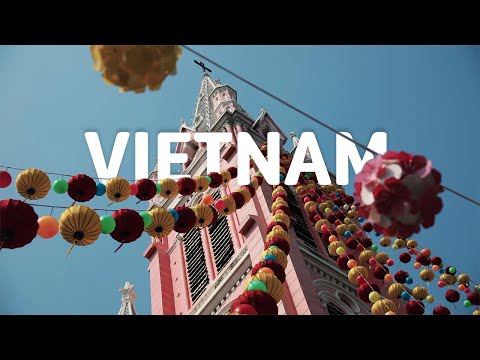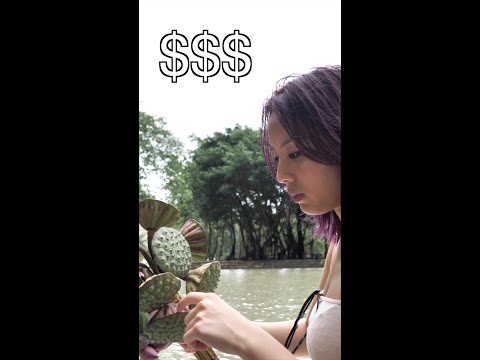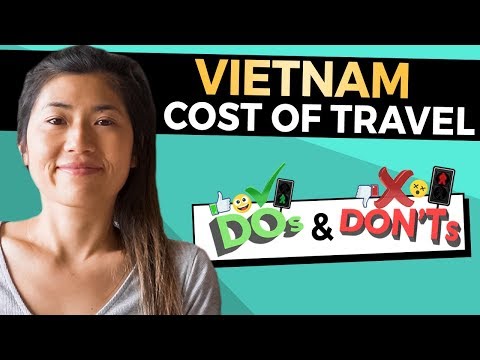How Much Money Should You Bring To Vietnam For A 2-Week Trip?

Traveling to Vietnam for a 2-week holiday and not sure how much cash to carry? It’s important to know that the currency used there is the Vietnamese Dong. This blog post will guide you through factors including accommodation, transportation, food, activities and other miscellaneous expenses that’ll help determine your ideal budget for a thrilling vacation in Vietnam.
Stay tuned as we take off on this financial planning journey!
Key Takeaways
- The currency used in Vietnam is the Vietnamese Dong, so it’s important to bring enough cash for your trip.
- Budget accommodations in Vietnam include hostels, guesthouses, and small local hotels, with prices ranging from $10 to $30 per night.
- Airfare costs to Vietnam can vary depending on the season and departure location, with round-trip tickets ranging from $500 to $1,500.
- Local transportation options in Vietnam are affordable, with buses costing around $12 per day and domestic flights available at a higher cost.
- Entrance fees for popular attractions in Vietnam range from $20 to $40 per person, while meal expenses average around $10 to $20 per day.
- It is recommended to budget between $500-$800 (excluding flights and accommodation) for a 2-week trip to Vietnam.
Overview of Vietnam as a Travel Destination
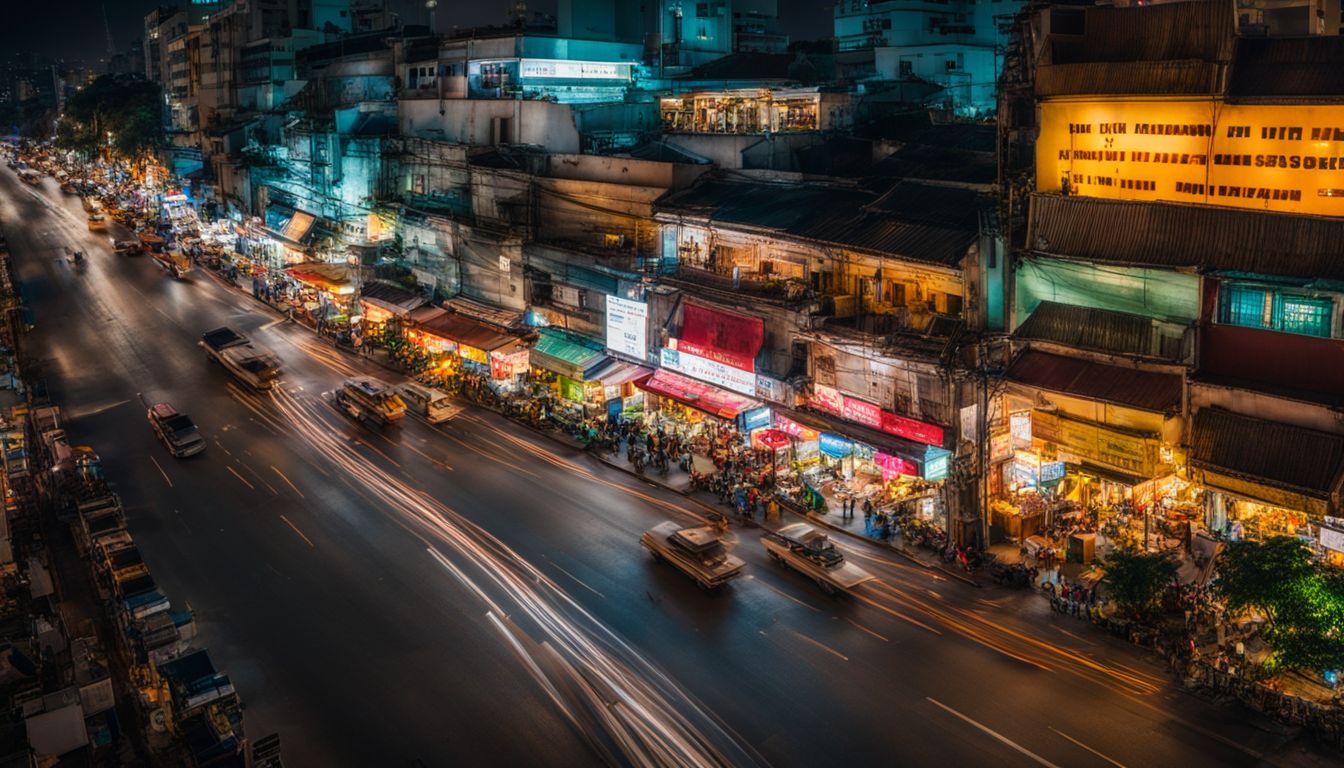
Vietnam is a popular travel destination known for its rich history, vibrant culture, and stunning natural landscapes. From the bustling streets of Ho Chi Minh City to the picturesque views of Ha Long Bay, there are plenty of must-visit places in Vietnam that will leave you in awe.
Additionally, it’s important to note that travelers from most countries require a visa to enter Vietnam, so make sure to check the requirements before planning your trip.
Popular places to visit

Vietnam is a land of many sights to see. Tourists like to visit these places:
- Ha Long Bay: A beautiful bay filled with large rocks.
- The Old Town of Hoi An: Filled with old buildings and fun shops.
- Mekong Delta: You can go on a boat ride here.
- Sa Pa: This place has tall mountains and rice fields.
- Phong Nha-Ke Bang National Park: A great spot for those who love nature.
- Ho Chi Minh City and Hanoi: These cities have lots of food, culture, and people.
Visa requirements

You will need a valid passport and visa to enter Vietnam. If you do not have a visa yet, don’t worry! You can get pre-approval for one before your trip starts. The cost of this tourist visa begins at 25 dollars, but it can go up to 155 dollars if the stay lasts from two to five years.
There’s another choice too: an e-visa. This is open to citizens of all nations and areas. It allows stays as long as 90 days with multiple entries permitted. To get this e-visa, pay either 25 dollars for a one-entry or 50 dollars for multiple entries through bank transfer.
Please note that US travelers must always take a visa before coming over – no matter how long they plan on staying or why they are visiting.
Accommodations in Vietnam

There are various budget options for accommodations in Vietnam, including guesthouses and hostels.
Budget options

If you’re on a tight budget, Vietnam has many cheap places to stay.
- Hostels are the cheapest option. Prices can start from as low as $10 per night.
- Guesthouses offer another value-for-money choice. They often include breakfast in the price, too.
- Small local hotels are a bit more pricey but still affordable. You can find nice rooms for about $20-$30 per night.
- Airbnbs or homestays let you live like a local. They have varied prices but often fall into a budget-friendly range.
Average cost per night

Accommodation in Vietnam offers a broad price range to fit varying budget preferences. Here’s an overview of the average cost per night depending on the type of accommodation:
| Type of Accommodation | Average Cost per Night |
|---|---|
| Dorm bed | $6-12 USD |
| Double-occupancy in a Hotel | d666,958 |
| Luxury Resort | $20-80 USD |
| Average Accommodation Cost | $42 USD per day |
Remember, these prices are susceptible to changes based on location and time of year. Travelers with a flexible budget can conveniently explore the range of available options. Yet, for those on a tight budget, the dorm bed option is quite affordable and comfortable.
Transportation in Vietnam

When it comes to transportation in Vietnam, you’ll need to consider the cost of airfare and local transportation options.
Airfare

Traveling to Vietnam is an exciting opportunity, and one major cost to consider is the airfare. The cost of a round-trip ticket to Vietnam can range anywhere from $500 to $1,500. It is dependent on factors like the season of travel, the airline, and the departure location.
| Airfare Factors | Possible Cost |
|---|---|
| Off-peak season | $500 – $800 |
| Peak season (December – April) | $800 – $1,500 |
| Departure from North America | $1,000 – $1,500 |
| Departure from Europe | $800 – $1,200 |
| Departure from Asia | $500 – $800 |
These airfare costs are averages and can change based on various conditions. It is always a good idea to book flights in advance and to keep an eye on deals and discounts offered by different airlines. Also, traveling during the off-peak season can significantly reduce the airfare.
Local transportation
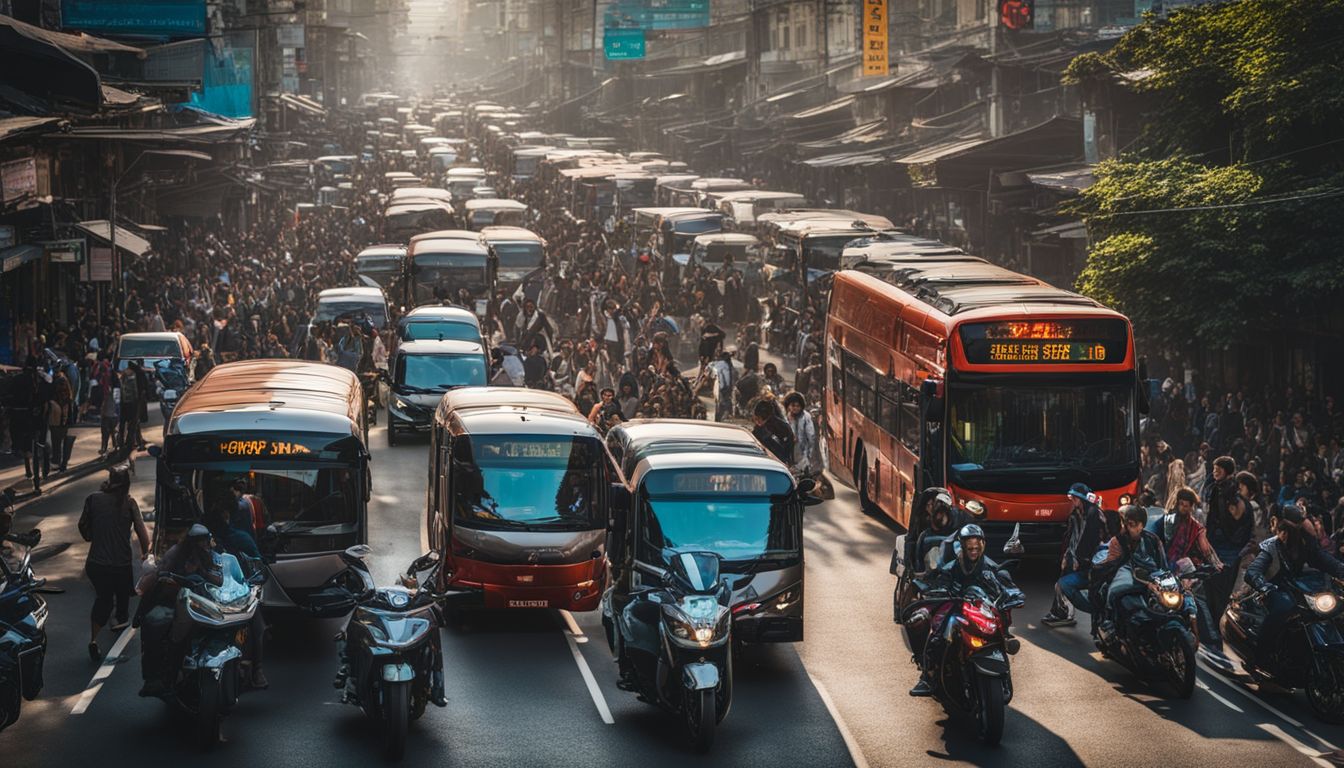
Local transportation in Vietnam is both efficient and cost-effective, making it a good option for travelers on a budget. With an average cost of around d300,168 ($12) per day, getting around the country is relatively inexpensive.
| Type of Local Transportation | Description | Average Cost |
|---|---|---|
| Buses | Buses in Vietnam are a popular choice due to their affordability and efficiency. Most buses are clean and comfortable, making them a suitable option for both short and long-distance travel. | $12 per day |
| Domestic Flights | Domestic flights are another option for getting around Vietnam. While more expensive than buses, they’re still relatively cheap, offering fast and convenient travel between cities. | Variable |
When planning your transportation budget for a two-week trip, expect to spend approximately $135.87 to $300, depending on your chosen method of travel. However, keep in mind that the cost of local transportation is just one of the many factors to consider when budgeting for your trip to Vietnam.
Tips for saving money on transportation

To save money on transportation during your trip to Vietnam, here are some tips:
- Use public buses: Bus travel in Vietnam is clean, efficient, and comfortable. Taking the bus is usually cheaper than other modes of transportation.
- Take local transportation options: Subways and trains in Vietnam are affordable, with one-way tickets typically costing between $0.50 to $1.50.
- Plan your own trip: Instead of booking expensive tours or hiring private drivers, consider planning your own itinerary using public transportation.
- Rent a motorbike or bicycle: If you’re comfortable with two-wheelers, renting a motorbike or bicycle can be a cost-effective way to get around Vietnam’s cities and countryside.
- Share rides with others: If you’re traveling with other people or meet fellow travelers along the way, consider sharing taxi rides or renting a car together to split the costs.
- Walk whenever possible: Exploring on foot not only saves money but also gives you a chance to discover hidden gems in Vietnam’s cities and towns.
Cost of Activities and Entrance Fees

Visiting popular attractions in Vietnam may require entrance fees, which can vary in cost per person.
Popular attractions

Vietnam is home to many popular attractions that you should definitely check out during your trip. Here are some of the must-visit places:
- Halong Bay: With its stunning limestone karsts and emerald waters, Halong Bay is a UNESCO World Heritage Site and a top attraction in Vietnam.
- Hoi An Ancient Town: This charming town is known for its well-preserved architecture, ancient temples, and vibrant lanterns.
- Ho Chi Minh City: Formerly known as Saigon, this bustling metropolis offers a mix of modern skyscrapers, historical landmarks like the War Remnants Museum, and vibrant markets.
- Hue Imperial City: Explore the grandeur of the Nguyen Dynasty at this UNESCO World Heritage Site, which features imperial palaces, temples, and tombs.
- Phu Quoc Island: If you’re looking for pristine beaches and crystal-clear waters, Phu Quoc Island is the perfect getaway destination.
- Sapa: Located in the mountains of northwest Vietnam, Sapa offers breathtaking scenery and opportunities for trekking through terraced rice fields.
- Mekong Delta: Take a boat tour through this vast maze of rivers and canals to experience the unique floating markets and lush green landscapes.
Average cost per person
For a 2-week trip to Vietnam, the average cost per person for activities and entrance fees is around $20 to $30 per day for budget travelers. If you’re looking for mid-range options, expect to spend about $30 to $60 per day. Popular activities like a Halong Bay cruise or visiting the Cu Chi Tunnels can cost between $20 and $40 per person. While some websites suggest a budget of around $20 per day, it’s important to note that actual expenses may exceed this amount. On average, a mid-range traveler can expect to spend approximately $50 per day in Vietnam.
Food and Drink Expenses
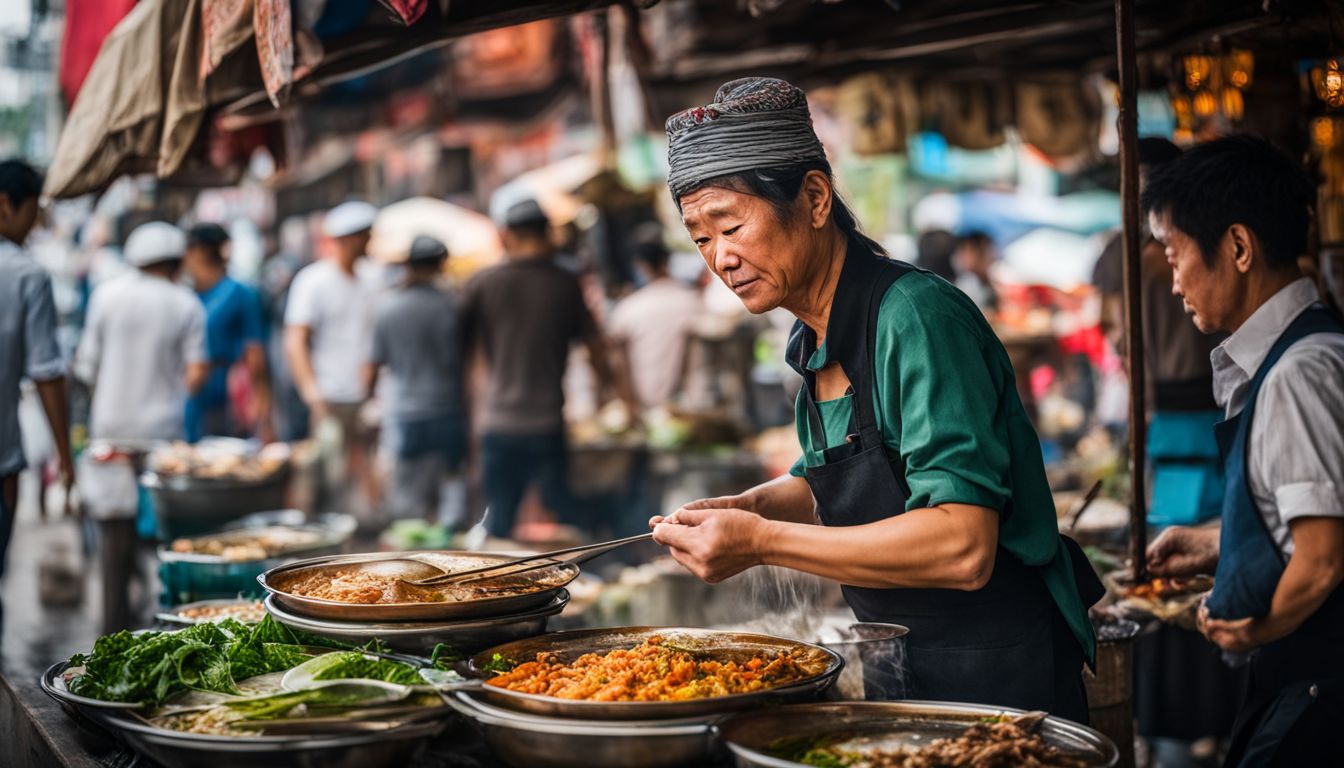
The cost of food and drinks in Vietnam can vary, but on average, you can expect to spend around $10 to $20 per day for meals.
Average cost per day for meals
When it comes to meals in Vietnam, the average cost per day is around d344,871. For budget travelers, you can expect to spend about $20 to $30 per day on your meals. If you’re looking for cheaper options, local street food is usually the way to go. You can find delicious and filling dishes from street vendors at affordable prices. On the other hand, if you’re in the mood for a mid-range meal at a restaurant or cafe, it may cost you around $5 to $10 per meal. Keep in mind that restaurants and cafes tend to be more expensive compared to street food. So if you want to save some money during your trip, exploring the local street food scene is definitely worth considering!
Tips for saving money on food
- Look for local street food stalls and small local eateries, as they tend to have lower prices compared to tourist restaurants.
- Avoid dining in popular tourist areas, as the prices are usually higher.
- Embrace the Vietnamese culture by trying their traditional dishes like pho and banh mi, which are typically cheaper than Western options.
- Consider sharing meals with travel companions to split costs and try more varieties of dishes.
- Take advantage of happy hour promotions or meal specials offered by some restaurants and bars.
- Visit local markets or grocery stores to buy fresh produce or snacks for a budget-friendly picnic or self-prepared meals.
- Carry a refillable water bottle to save on buying bottled water, as tap water may not be safe for consumption in some areas of Vietnam.
Miscellaneous Expenses

In addition to accommodation, transportation, and activities, there are other miscellaneous expenses to consider during your trip to Vietnam.
Souvenirs
Don’t forget to budget for souvenirs when planning your trip to Vietnam. Whether you’re looking for traditional crafts, clothing, or unique keepsakes, there are plenty of options available throughout the country.
Souvenir prices can vary depending on the item and where you purchase it, so be sure to do some research and compare prices before making a purchase. Keep in mind that bargaining is common in many markets and shops, so don’t be afraid to negotiate for a better price.
Just remember to stay respectful and polite during the process. With a bit of savvy shopping, you can bring home meaningful mementos without breaking the bank.
Laundry
Laundry expenses in Vietnam can vary depending on where you stay. If you choose a four- or five-star hotel, they usually charge per item for laundry services, and it can be quite expensive compared to other options.
On average, the cost for laundry in Vietnam is around $1 per kilo. It’s important to plan and budget for these expenses while traveling so that you’re not caught off guard. There are also practical guides available that offer tips and advice on how to do laundry while traveling, which can come in handy if you’re looking to save some money during your trip.
Tips for bargaining
When bargaining in Vietnam, it’s important to keep a few tips in mind:
- Start with a friendly smile and a polite greeting.
- Don’t accept the initial price offered; always negotiate for a lower price.
- Be prepared to walk away if the seller is not willing to lower the price.
- Compare prices at different stalls or shops before making a purchase.
- Learn some basic Vietnamese phrases to communicate better with local sellers.
- Stay confident and assertive during negotiations, but remain respectful.
- Consider purchasing multiple items from the same seller for a potential discount.
- Always be mindful of cultural differences and avoid being overly aggressive while bargaining.
Recommended Budget for a 2-Week Trip
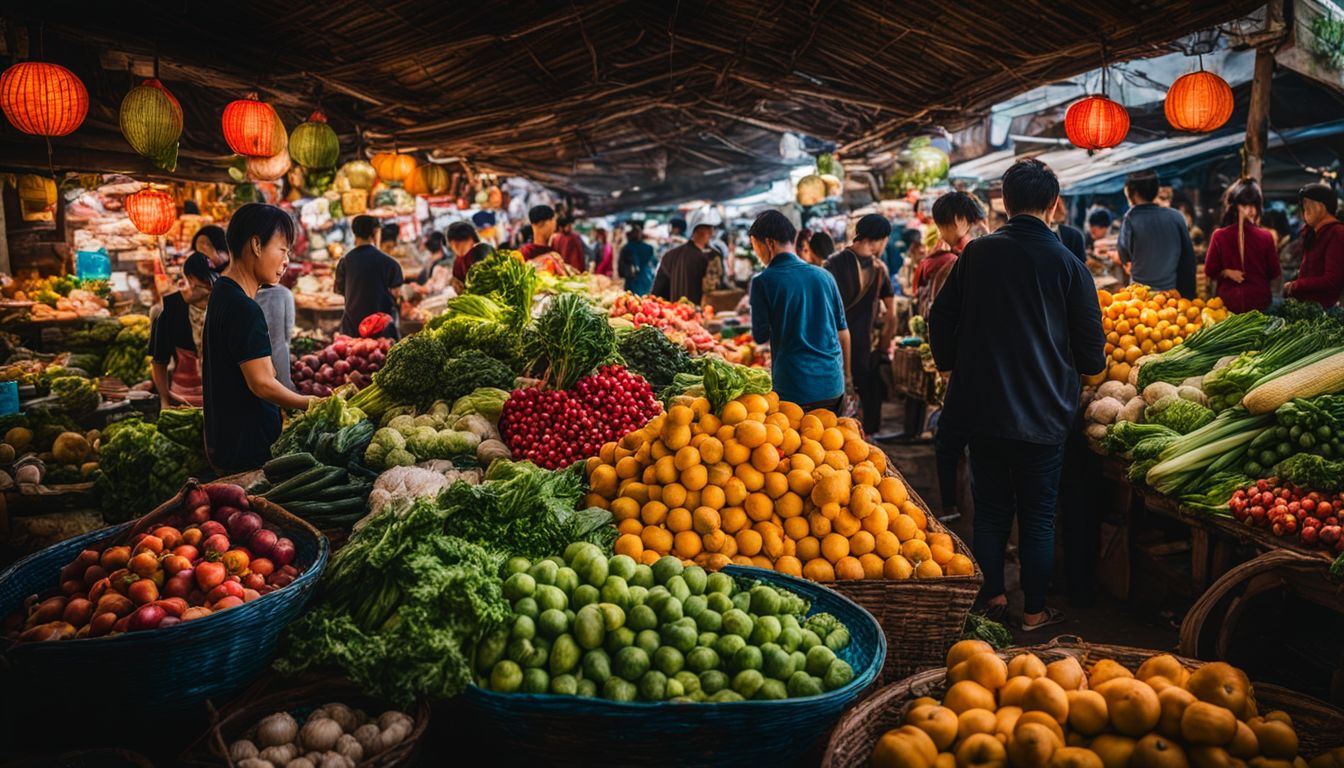
Plan to budget around $1,000 to $1,500 per person for a two-week trip in Vietnam. However, this can vary depending on your travel style and preferences. Read on to learn more about how to make the most of your money during your time in Vietnam!
Total estimated cost for two people
For a two-week trip to Vietnam, the total estimated cost for two people can vary depending on your travel style and preferences. On average, budget travelers can expect to spend around d42,187,354 ($1,716) for accommodations, transportation, activities and entrance fees, food and drink expenses, as well as miscellaneous costs like souvenirs or laundry. Keep in mind that this estimate does not include flights to and from Vietnam. It’s important to plan ahead and consider factors that can affect your budget such as the season you’re traveling in and specific locations you plan to visit.
Factors that can affect your budget
Here are some factors that can affect your budget for a 2-week trip to Vietnam:
- Choice of accommodations: The type of lodging you choose, whether it’s a budget hostel or a luxury hotel, will significantly impact your expenses.
- Transportation options: The cost of airfare and local transportation, such as taxis or buses, can vary depending on the season and availability.
- Activities and attractions: Entrance fees for popular attractions can add up quickly. Consider which activities are a priority and budget accordingly.
- Food preferences: Your food choices will affect your daily expenses. Street food and local vendors tend to be cheaper than dining at restaurants.
- Shopping and souvenirs: If you plan on buying souvenirs or shopping during your trip, remember to allocate a portion of your budget for these expenses.
- Bargaining skills: If you enjoy bargaining at markets or street stalls, it can help you save money on purchases.
Other Considerations

Is Vietnam cheaper than other Southeast Asian countries? Find out how much money per day you should bring and what to avoid to save money during your trip.
Is Vietnam cheaper than other Southeast Asian countries?
Vietnam is generally considered to be a cheaper option compared to other Southeast Asian countries. It’s more affordable than places like North America and Europe. In fact, if you’re a budget traveler in Southeast Asia, you can expect to spend less than $35 USD per day in Vietnam.
Comparisons between Vietnam and Thailand also suggest that Vietnam may have lower costs overall. So, if you’re looking for an affordable travel destination in Southeast Asia, Vietnam is definitely worth considering.
How much money per day should you bring?
For your daily expenses in Vietnam, it is recommended to bring around $20 per person per day. This should cover your food, transportation, and other miscellaneous expenses. Keep in mind that the average daily vacation cost in Vietnam is around $61 per day, so having a budget of $20 per person can help you save money while still enjoying your trip.
It’s always a good idea to have some extra cash on hand for unexpected expenses or emergency situations.
What to avoid to save money
To save money during your trip to Vietnam, there are a few things to avoid:
- Eating deep-fried dishes: Deep-fried foods can be more expensive compared to other local dishes. Opt for traditional Vietnamese meals like pho or banh mi instead.
- Booking transportation or tours through hotels or hostels: These options can be more expensive as they often include extra fees. Look for alternative ways to book your transportation and tours, like using local travel agencies or online platforms.
- Taking taxis without using a meter: Some taxis in Vietnam may try to charge higher fares if you don’t ask them to use the meter. Always insist on using the meter, or consider using ride-hailing services for transparency and potentially lower prices.
- Shopping at tourist hotspots: Popular tourist areas tend to have inflated prices for souvenirs and goods. Explore local markets and shops outside of these areas for better deals and a more authentic shopping experience.
- Excessive bartering: While bargaining is common in Vietnam, be mindful not to overdo it. It’s important to respect the local sellers and their livelihoods while still getting a fair price.
Conclusion
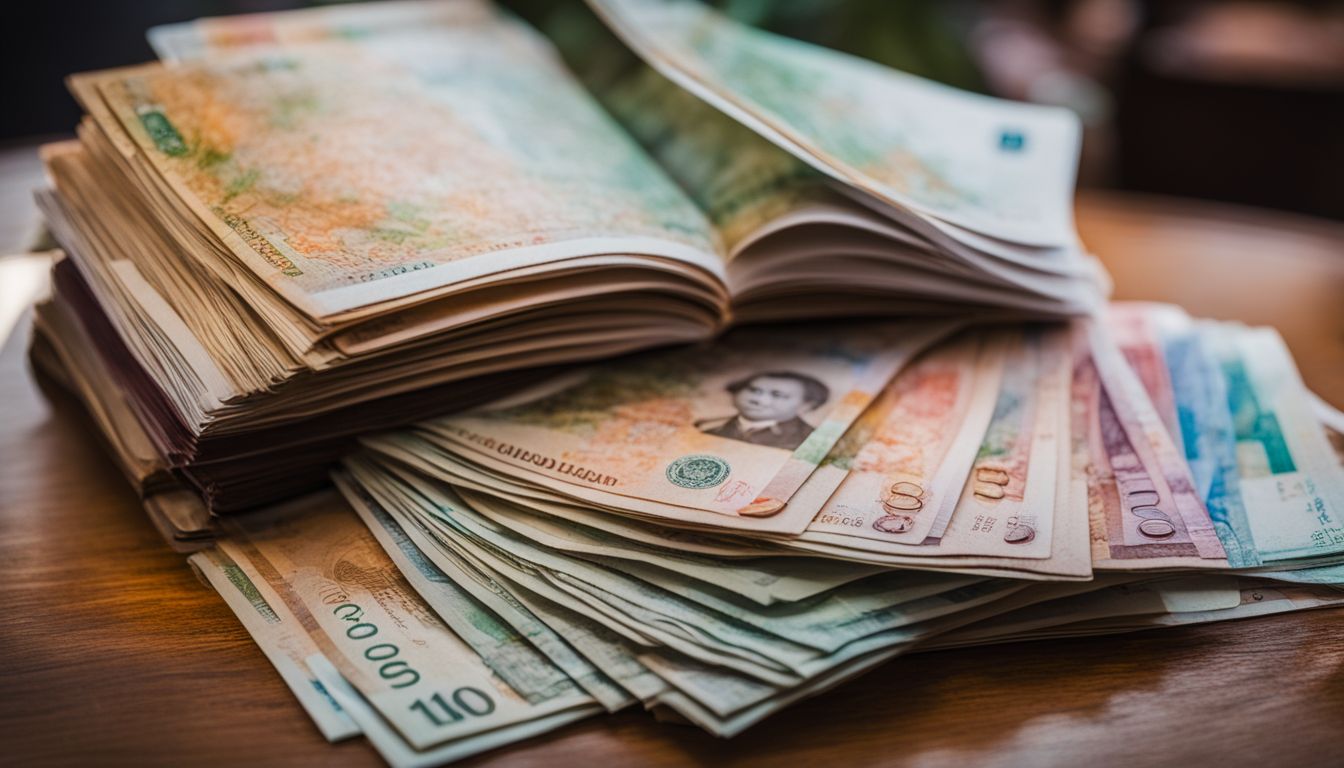
When planning your 2-week trip to Vietnam, it’s important to consider your budget. Based on average costs, a budget of $500-$800 per person (excluding flights and accommodation) is recommended.
With affordable transportation, food options, and attractions, Vietnam offers plenty of opportunities to save money while still enjoying a memorable vacation. Do some research before you go and plan ahead to ensure you have enough money for the activities and experiences you want during your trip.
FAQs
1. How much money should I bring for a 2-week trip to Vietnam?
The amount of money you need to bring to Vietnam for 2 weeks really depends on the kind of activities and places you plan to visit.
2. Is it costly to travel around Vietnam in two weeks?
Traveling within Vietnam is not very costly! You can plan your budget based on the places you want to see and things you want to do.
3. Can I use my credit card in Vietnam during my two-week stay?
Yes, you can use your credit card in many places in Vietnam; but always have some cash ready for small shops or street food stalls that only take cash.
4. What if I run out of money during my 2-week trip in Vietnam?
Don’t worry! Many banks are available throughout cities like Hanoi or Ho Chi Minh City where one could withdraw local currency using foreign debit or credit cards.
